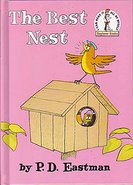- but, oddly enough, no advice about sage!
Many of the most commonly grown garden herbs thrive in bright sun and very warm soil. Herbs like tarragon and lavender, basil, oregano and thyme are perfect in a container or bed located in bright sun that mimics their Mediterranean heritage. Does that mean for a shady yard growing herbs is out of the question? Not at all!
There are several herbs native to woodland habitats that thrive in shaded areas. Some herbs, though not native to shade, will happily grow in dappled sun but with a more loose and upright habit.
Consider growing these herbs in a shady corner of the garden, as accents under trees, or in containers for an area with dappled sun. The herbs listed with an (N) are native to shade, the others will grow in full sun or partial shade.
- Angelica: (N) The leaves are delicious in soups, salads, stews. The stems are often candied and are used to replace rhubarb in recipes.
- Beebalm: As well as being a magnet for bees and butterflies in the garden, the leaves make a delicious tea.
- Chervil (N): The leaves and stems are prized in French cooking.
- Dill: Delicious used to season fish, eggs and vegetables. Host plant for Black Swallowtail butterflies.
- Fennel: Leaves, stems and seeds have a light licorice flavor. Excellent as a substitute for celery.
- Ginger (N): Use the root fresh or dried to add a spicy citrus flavor to dishes. Also wonderful for tea blends.
- Lovage: The leaves have a flavor similar to celery and make an ideal substitute. It’s easiest to dry the leaves for use.
- Parsley: Available in curled leaf and flat leaf varieties. Cilantro ("Chinese Parsley" is the key ingredient in salsa verde.
- Rosemary: Pine and mint flavors. Excellent in salad dressings and marinades, also wonderful with orange peel for tea.
- Sweet cicely (N): Tastes of celery and anise. Wonderful in soups and with fish and fruit.
- Sweet woodruff (N): Vanilla scented. Wonderful as an ingredient for tea, May wine and potpourri.
- Tarragon: Light licorice flavor is wonderful with meat and vegetables. Ideal in sauces, vinegars and butters.
- Thyme: There are several varieties each with their own unique flavor, all include a faint clove taste. Excellent for use in cooking as well as in tea.
- Finding herbs that will flourish in your light conditions may require a bit of trial and error.
- Remember that soil health is just as important in shady areas as sun.
- Compost and organic fertilizers will enrich your soil and keep your herbs healthy and strong.
- Be aware that frequent applications of fertilizers to herb plants will diminish their essential oils and lessen their flavors.
- Applications of liquid kelp twice a season will provide beneficial nutrients.
- There are many other plants native to shady woodlands that have herbal uses.
- For more information on your local native herb plants check with your local Cooperative Extension.








No comments:
Post a Comment